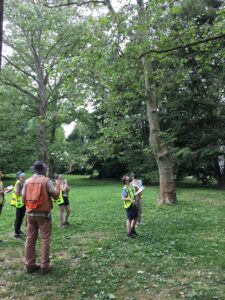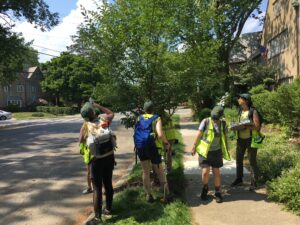Monitoring and modeling changes in street tree communities over time
Monitoring and modeling changes in street tree communities over time
2019 Hyland Johns Grant Program
Study Results:
Our research focused on how street tree populations change over time in two large cities in the northeastern US and what observations of change might mean for the future of the urban canopy in these cities and beyond. We were also interested in understanding what factors drive changes in street tree populations and how this information can be used by stakeholders to change management practices and resource allocation. Proactively managing for a healthy, optimally-stocked street tree population involves an optimized balance of planting and mortality informed by local or regional empirical data. To that end we conducted a systematic, repeated inventory of street tree populations in Philadelphia, PA and New York City, NY. We sought to 1) assess shifts in composition, structure, and characteristics of these cities’ street tree community over time (2015-present), and 2) examine street tree mortality patterns. We re-inventoried 2,701 street trees in 103 randomly-located, fixed-length street segment plots in Philadelphia in 2021 and half of the original 58 plots in NYC in 2022, with remaining work to be completed in 2023. Preliminary results in Philadelphia show an overall annual mortality rate of 3.67% between 2015-2021, which is relatively high compared to other studies focused on tree survival in urban forests. The data also suggest a shift in the mature size of the trees planted on Philadelphia’s streets, away from large-statured tree species toward small-statured ornamentals. This change is likely to have implications for the benefits that street trees provide to urban residents, such as shade and pollution removal, and their role in the urban ecosystem in general (e.g., carbon storage potential).
We also assessed changes in species diversity and tree size class distributions and explored what factors were most strongly related to patterns in mortality. We found that a mix of tree characteristics (e.g., vigor, size), site characteristics (land use, impervious cover, demolition events), and neighborhood characteristics (e.g., poverty rate, unoccupied housing rate) were the strongest predictors of street tree mortality patterns. This finding illustrates the complexity of understanding and predicting how long street trees might live and how those lifespans are likely to vary across the urban landscape. However, this knowledge will nonetheless be an essential baseline for understanding future changes in the study cities and also will provide a template for understanding similar patterns in other cities across the world. Our findings will contribute empirical data to street tree projection and ecosystem service models and assist in strategic planning and goal-setting initiatives in the study cities and beyond.


Year of Grant Awarded: 2019
Grant Program: Hyland R. Johns Grant Program
Grant Title: Monitoring and modeling changes in street tree communities over time
Researcher: Dr. Robert Fahay, University of Connecticut
